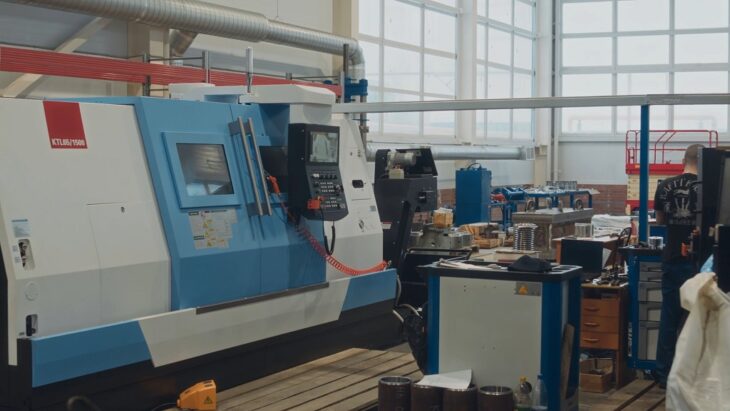Acquiring equipment, vehicles, or property for your business can be a game-changer. Whether you’re expanding your operations, upgrading outdated machinery, or investing in new property, having the right financing in place is critical.
While it’s tempting to get into a large purchase with available cash, for many businesses, the cost of acquiring these assets can be significant, requiring a more strategic approach.
Fortunately, you have a variety of financing options at your disposal, each with its own benefits and considerations. The best method will depend on your business’s current financial situation, goals, and the nature of the asset you’re acquiring.
Table of Contents
Toggle1. Equipment Financing

For many businesses, equipment is the lifeblood of operations. Whether it’s machinery, computers, or specialized tools, having the right equipment ensures your business runs smoothly. Equipment financing allows you to obtain the equipment you need while spreading out the cost over time.
In this arrangement, the equipment itself serves as collateral for the loan, making it easier to secure financing, even if your credit isn’t perfect. Repayments are typically structured over 1 to 5 years, and interest rates depend on your credit score and the term of the loan.
Why It’s Great:
- Preserves cash flow: You don’t need to pay for the equipment up front.
- Tax benefits: Many equipment loans are eligible for tax deductions under Section 179.
- Flexible terms: Loan terms can be adjusted based on the cost of the equipment.
This is ideal for businesses that need specific pieces of equipment and want to avoid tying up large amounts of capital in one purchase. It’s especially useful for industries like manufacturing, construction, or any business that requires specialized tools.
2. Leasing

Leasing is another popular option for acquiring equipment or vehicles. Unlike equipment financing, leasing doesn’t give you ownership of the asset, but it allows you to use it for a set period with regular payments. At the end of the lease term, you may have the option to purchase the equipment or return it.
Leasing often requires a smaller down payment and can be structured with lower monthly payments than financing. The asset itself usually has a shorter useful life, and leasing ensures that you’re always equipped with newer technology.
Why It’s Great:
- Lower upfront costs: Leasing often requires less initial capital than buying outright.
- Flexibility: At the end of the lease, you can return the equipment or buy it at a reduced price.
- Preserved credit lines: Since the equipment isn’t a loan, it doesn’t impact your credit lines as much as traditional loans.
Leasing is ideal for businesses that need to frequently upgrade equipment or vehicles and prefer lower monthly payments. This could include industries like IT, office equipment, or fleet management.
3. SBA Loans
For larger acquisitions, such as real estate or high-cost equipment, the U.S. Small Business Administration (SBA) offers loan programs designed to help small businesses gain access to capital. SBA loans typically come with lower interest rates and longer repayment terms compared to traditional bank loans. They can be used for both property purchases and equipment acquisitions.
The SBA’s 7(a) loan program, for example, can be used for real estate, machinery, or even refinancing existing debt. While SBA loans are easier to qualify for than traditional loans, they often require more documentation and a longer approval process.
Why It’s Great:
- Lower interest rates: SBA loans tend to offer more competitive rates than other forms of financing.
- Longer repayment terms: Repayment terms can stretch up to 25 years for real estate purchases.
- Flexible use: Funds can be used for a variety of purposes, including equipment, vehicles, or real estate.
SBA loans are perfect for businesses that have been in operation for several years, have strong financials, and are looking to make a larger investment, like purchasing property or expanding operations with new equipment.
4. Business Credit Cards

For smaller equipment or vehicle acquisitions, a business credit card can be a fast and flexible way to finance purchases. Credit cards are best used for short-term financing needs and can be effective for quick purchases like office supplies, small equipment, or even vehicle down payments.
While the interest rates can be higher than traditional loans, business credit cards often offer perks such as rewards points, cash back, or other incentives that can make them an appealing option for ongoing business expenses.
Why It’s Great:
- Instant access: Business credit cards offer immediate purchasing power.
- Perks and rewards: Many credit cards offer cashback, points, or travel rewards.
- Flexible repayment terms: You can carry a balance and make minimum payments, or pay it off more quickly.
This is a good option for businesses that need smaller amounts of financing for day-to-day purchases and can pay off their balance quickly to avoid high interest rates. It’s also useful if you need to make a purchase immediately but don’t want to commit to a long-term loan.
If your business requires larger amounts of financing for significant acquisitions, Funding Guru offers secured business loans that use business assets as collateral, typically offering lower interest rates and higher loan amounts.
5. Traditional Bank Loans

Traditional bank loans are one of the most straightforward ways to finance large acquisitions, including property and expensive equipment. With a bank loan, you borrow a lump sum of money and repay it over time with interest. The terms vary, but bank loans often have fixed interest rates and are paid off over a 5-10 year period.
One of the key benefits of bank loans is their predictability. Once the loan is approved, you have a clear repayment schedule, making it easier to plan your business’s cash flow.
Why It’s Great:
- Large loan amounts: You can borrow substantial amounts for property or equipment.
- Predictable payments: Fixed interest rates and consistent payments help with budgeting.
- Long repayment terms: These loans typically have long repayment periods, lowering monthly payments.
Traditional bank loans are best for established businesses with strong credit histories and the need to finance large assets, such as real estate, property upgrades, or high-cost machinery. This option is ideal for businesses looking for a straightforward, long-term financing solution.
6. Cash Purchase

If your business has sufficient cash reserves, purchasing equipment, vehicles, or property outright might be the best option. By paying with cash, you avoid interest payments and debt obligations. This route is often the most cost-effective in the long run since you avoid the added cost of financing fees.
Why It’s Great:
- No debt: You won’t need to worry about monthly payments or interest.
- Immediate ownership: You own the asset outright from day one.
- Simplicity: The transaction is straightforward with no complicated terms or paperwork.
This is ideal for businesses that have accumulated sufficient capital and want to avoid the burden of taking on debt. It’s also beneficial if you’re purchasing an asset that will have a significant impact on operations and want to own it immediately without additional obligations.
Conclusion
Financing equipment, vehicles, or property acquisitions requires a thoughtful approach. Whether you choose equipment financing, leasing, SBA loans, or even a traditional bank loan, each option offers unique advantages based on your business’s financial situation, asset needs, and long-term goals.
By exploring these financing methods, you can find a solution that preserves cash flow, minimizes risk, and ensures you acquire the necessary assets to keep your business running smoothly. The key is understanding your options and selecting the one that aligns best with your business’s financial strategy and operational needs.



